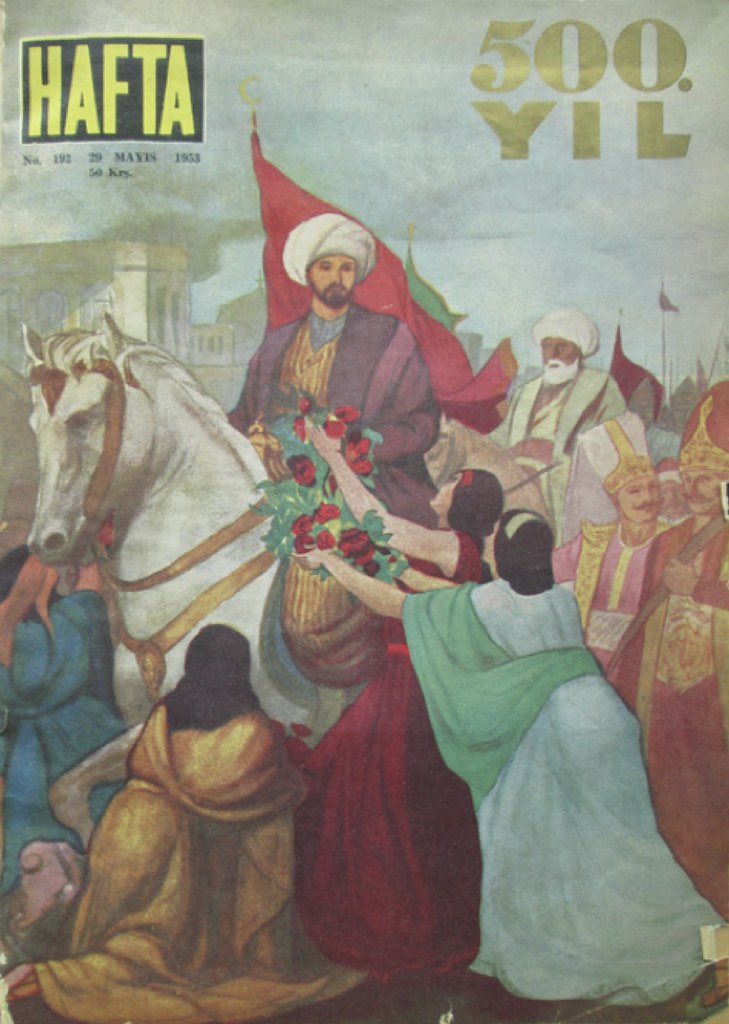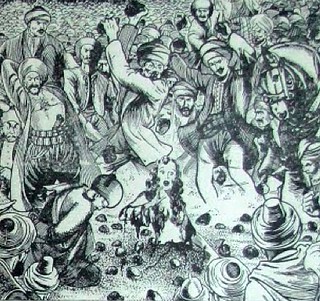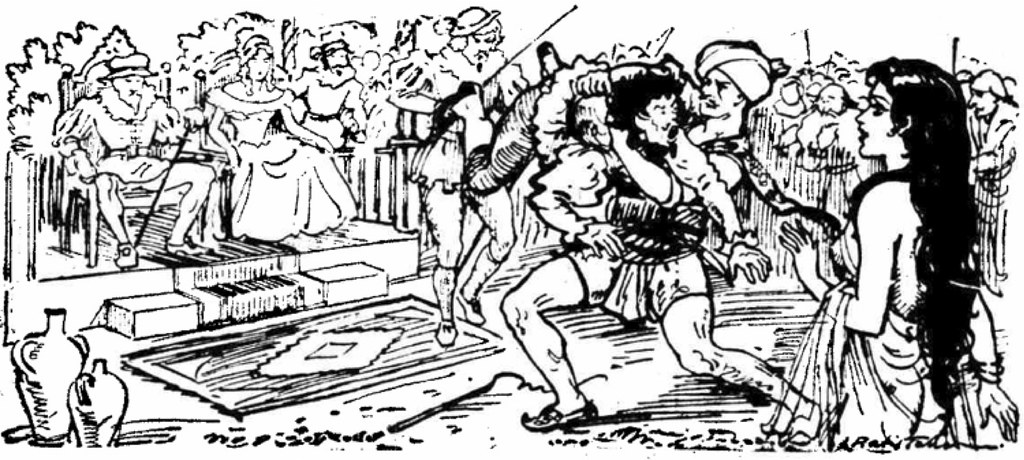Having finally had the chance to say my piece about the politics of Ottoman history in modern Turkey at Foreign Policy today, I feel like I can finally stop talking about it obsessively and move on to to all the more relevant and depressing things happening right now.** But anyone still interested in the upcoming 30,000 word version of the article from Middle East Studies, complete with footnotes and lots of long quotes from the likes of Affet Inan and Fuat Koprulu, can check back in a few weeks when it will be on academica.edu. For everyone else, here are some examples of what happened in the 1950s when the Turkish press discovered toplessness as a way to talk about history while simultaneously selling papers and and convincing condescending Western observers how modern and sophisticated they were (this was the 50s remember). The cartoon at right is from a satiricial magazine making fun of risqué treatments of Ottoman history in film, like the scene below from a big-budget dramatization of the Ottoman conquest of Istanbul:


 Sexualized Ottoman history was a staple of popular magazines like Ahmet Banoglu's History World, the first issue of which included a retelling of the Ottoman Empire's most famous stoning complete with the picture below (read the accompanying article here). On the right is an image of the cover of a magazine celebrating the 500th anniversary of the conquest of Istanbul with Byzantine women showing their love for Fatih.
Sexualized Ottoman history was a staple of popular magazines like Ahmet Banoglu's History World, the first issue of which included a retelling of the Ottoman Empire's most famous stoning complete with the picture below (read the accompanying article here). On the right is an image of the cover of a magazine celebrating the 500th anniversary of the conquest of Istanbul with Byzantine women showing their love for Fatih. 
A less subtle rendition of the same theme comes from Munif Fehim in the 1939 classic "Don't Touch the Lion," in which he patriotically warns Italian fascists not to mess with Turkey while reminding them that the Ottomans once "planted and sowed Turkish seed in the blood of a thousand Venetian girls." "Ask around," he continues "what Janissary lion rests in your great grandmother's heart?"
Finally, it would be impossible to ignore the work of Reşat Ekrem Koçu, one of the most erudite authors of popular Ottoman history who combined serious scholarship with a Ripley's Believe it or Not style. Works like his 1953 "From Osman Gazi to Ataturk" will be familiar to readers of Orhan Pamuk's "Istanbul," who were undoubtedly delighted to learn about the precise sexual feelings that the image below inspired in young Orhan. Koçu delighted in including strange and macabre details from the city's Ottoman history, detailing strange executions, love affairs, carnival amusements or monkey-murderers. It was an approach that proved perfectly compatible with nationalist glorification of military heroes from the Ottoman and Republican eras alike.

** Some people might rightly ask if it isn't a little ridiculous to write an article about neo-Ottomanism claiming people should stop talking about neo-Ottomanism all the time at a moment when so many more important things are happening in Turkey. I would only point out that I wrote this about a month ago in response to the New Yorker's piece on Muhteşem Yüzyıl. The publication was delayed on account of Crimea.







